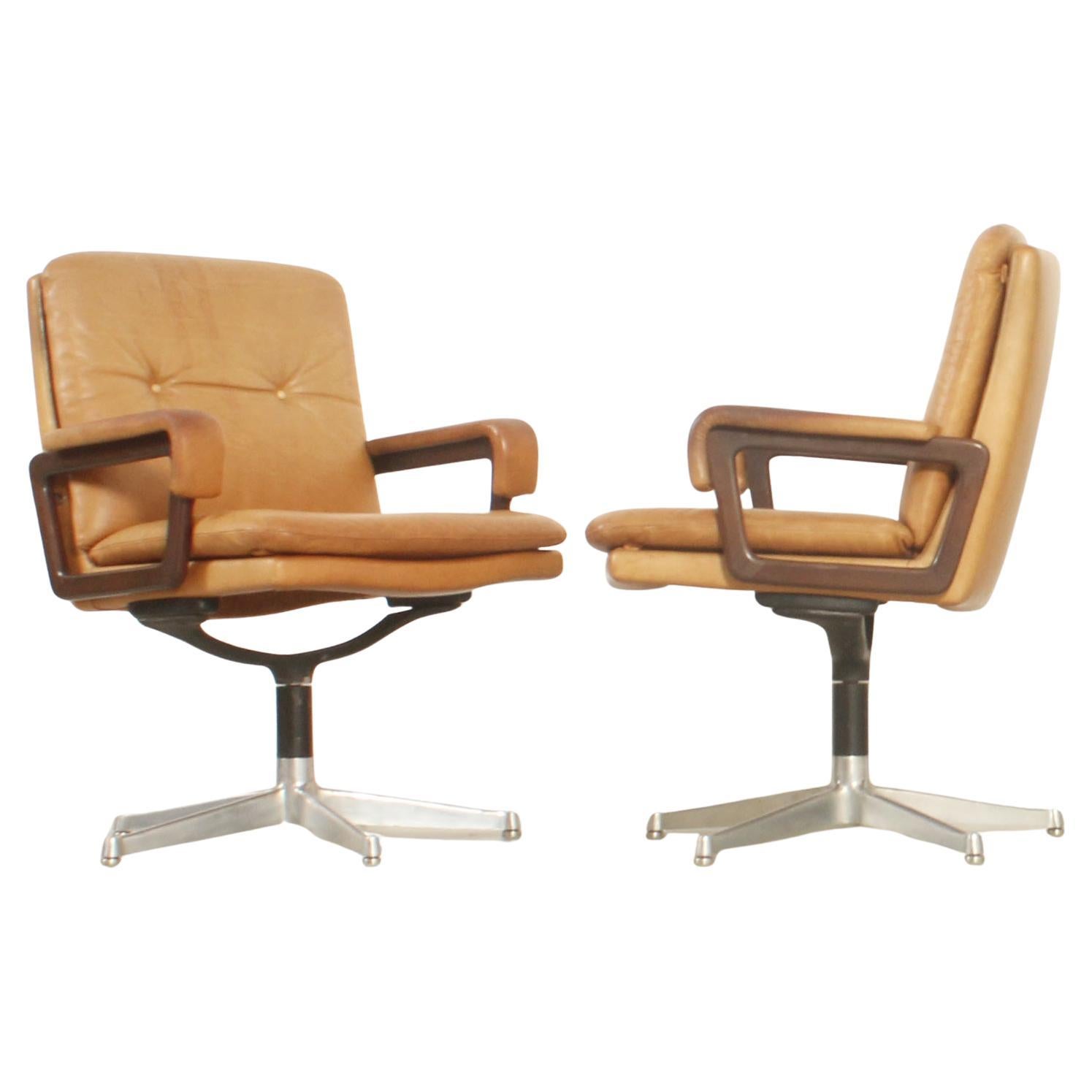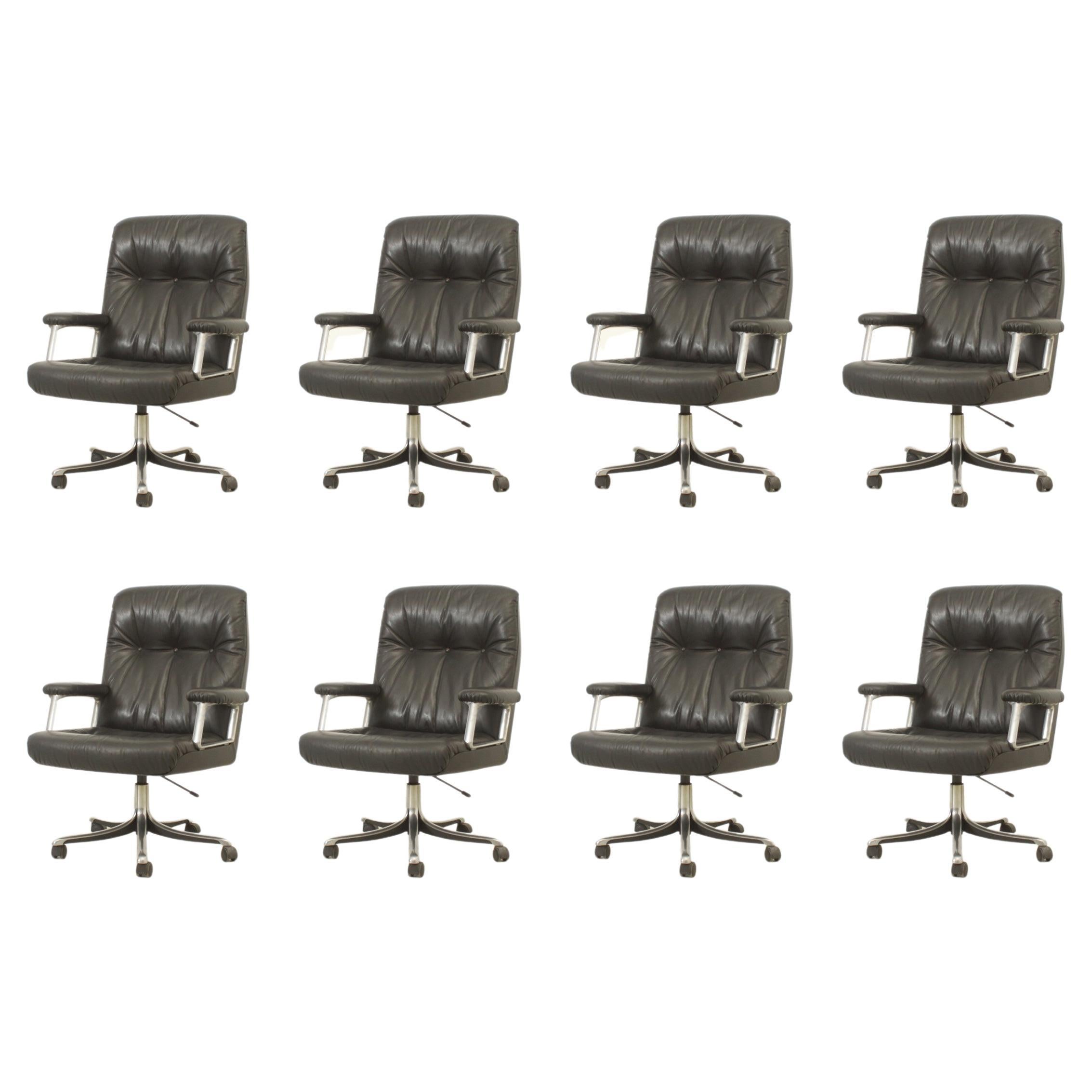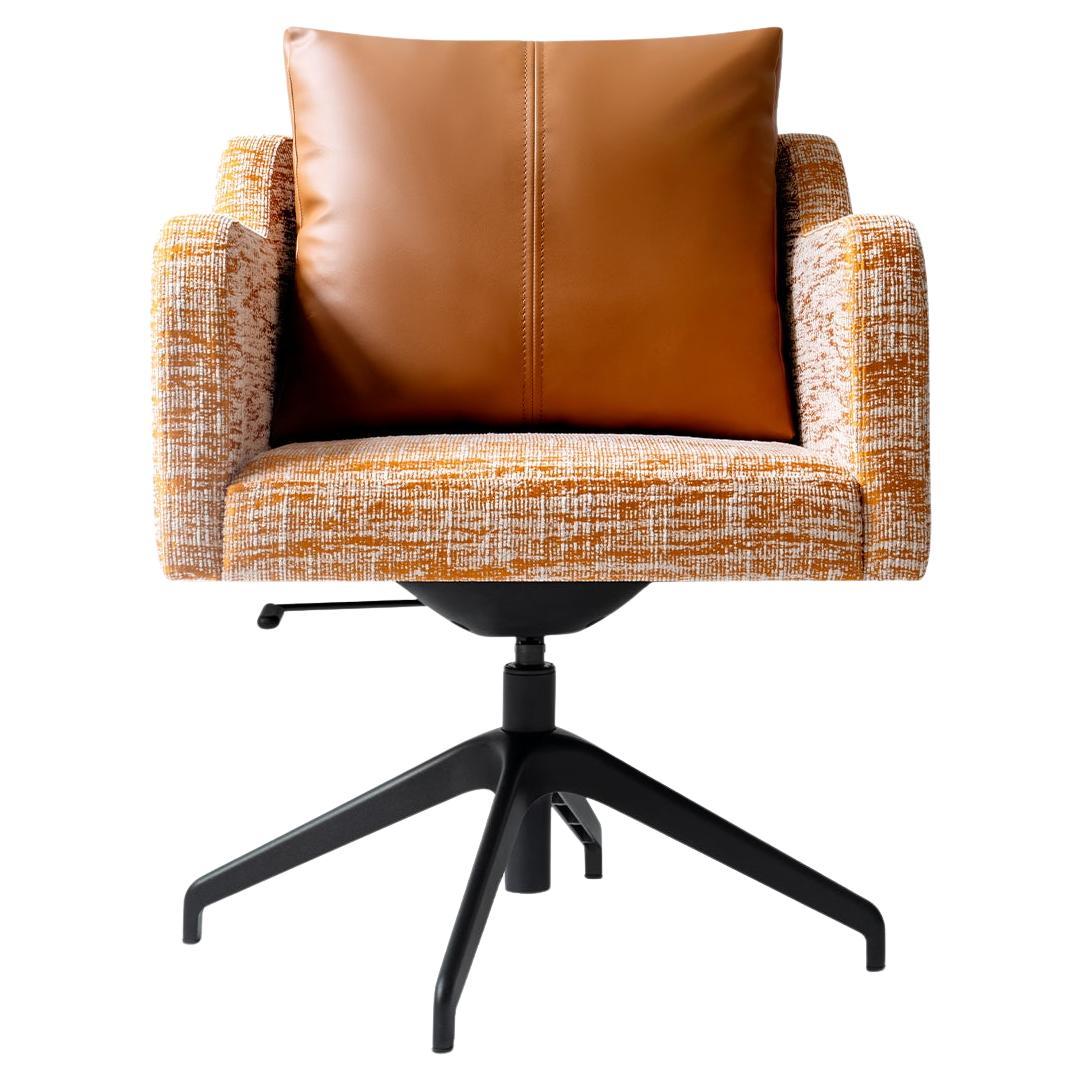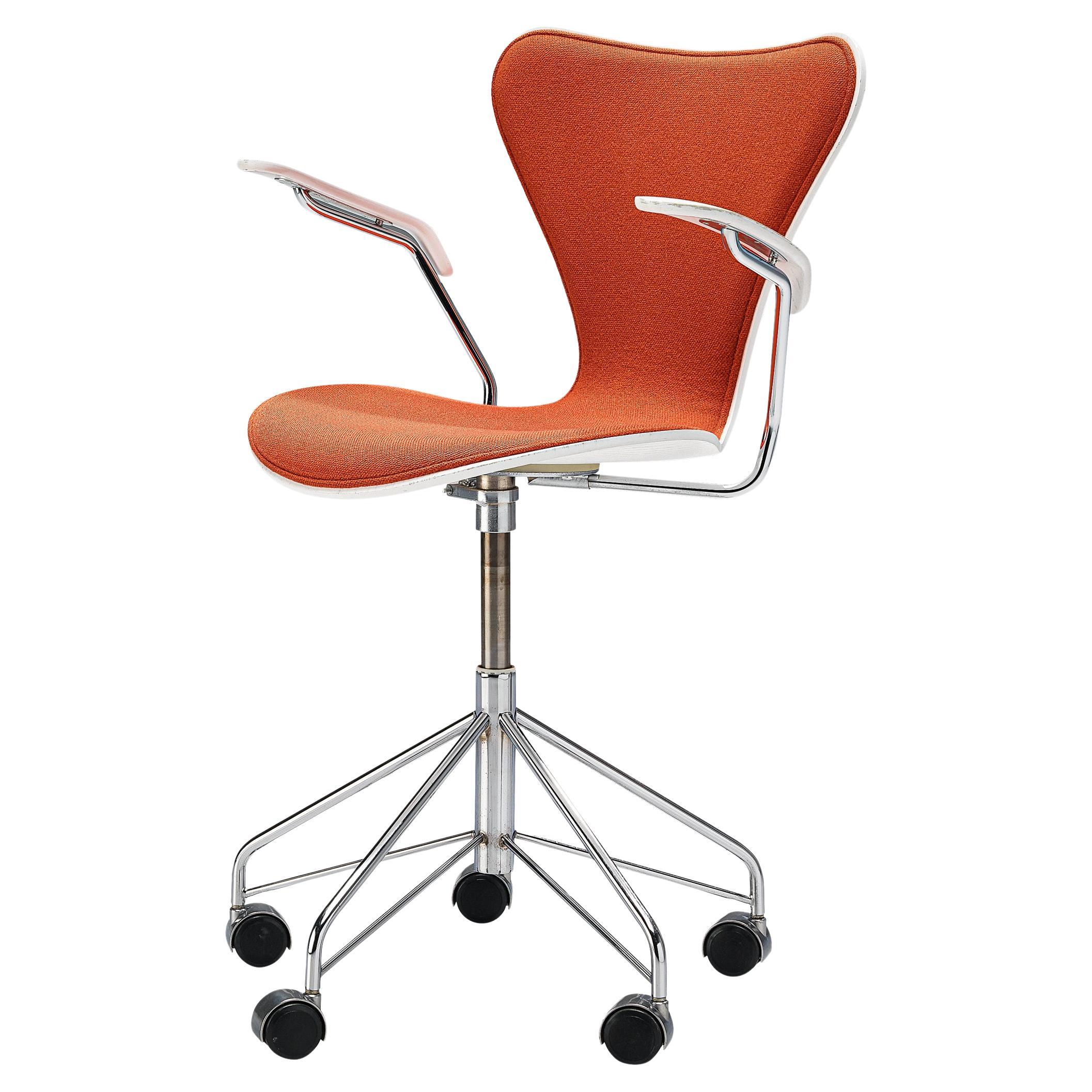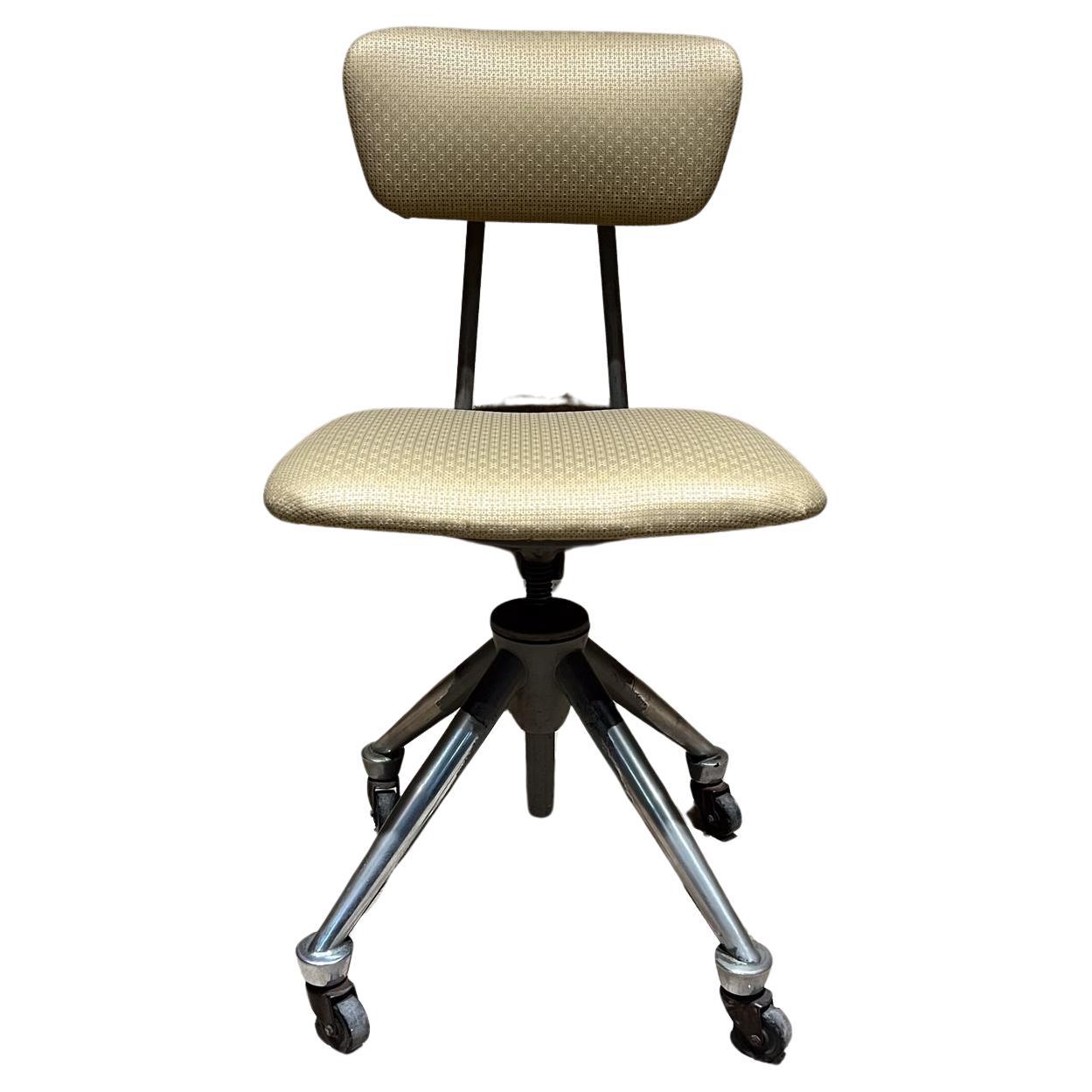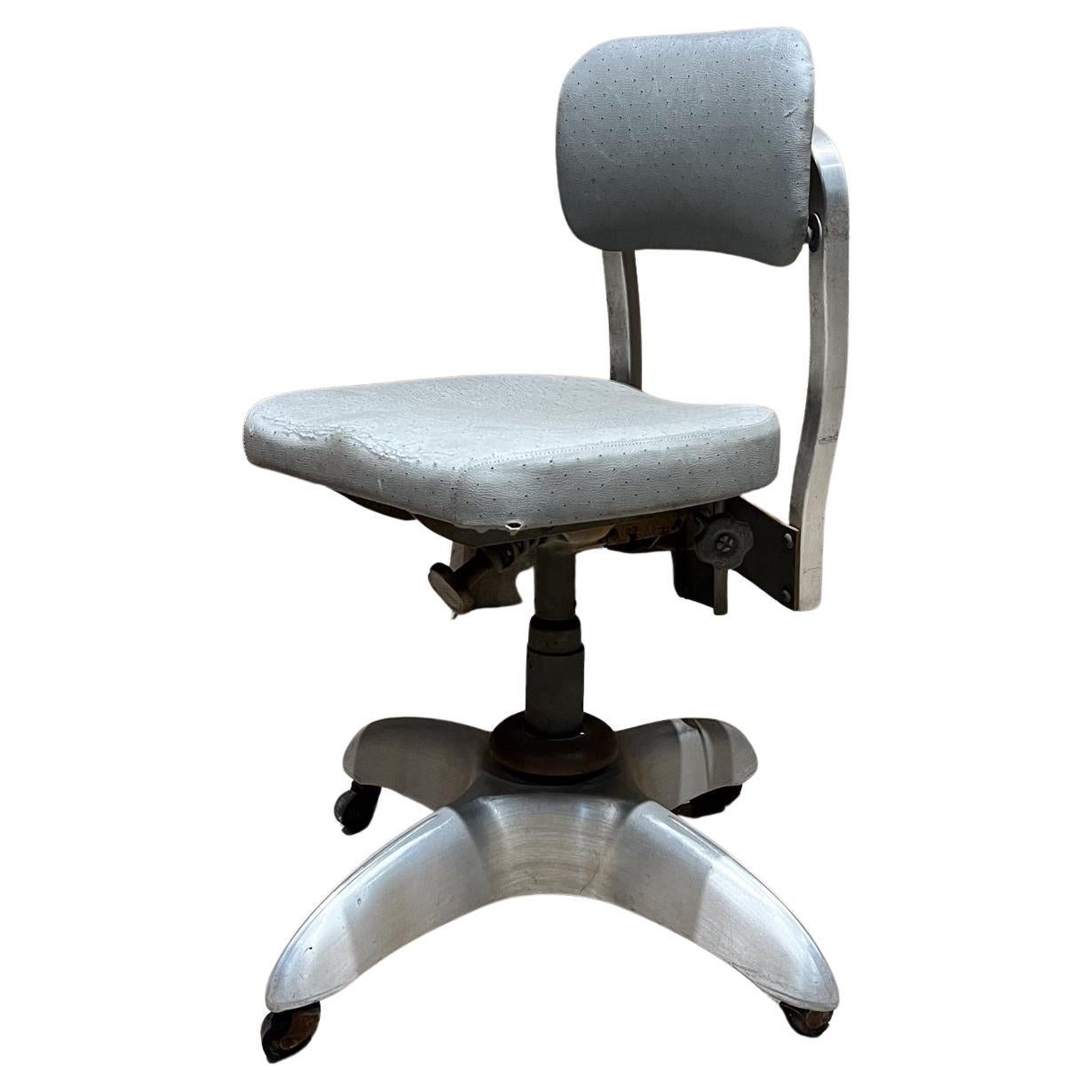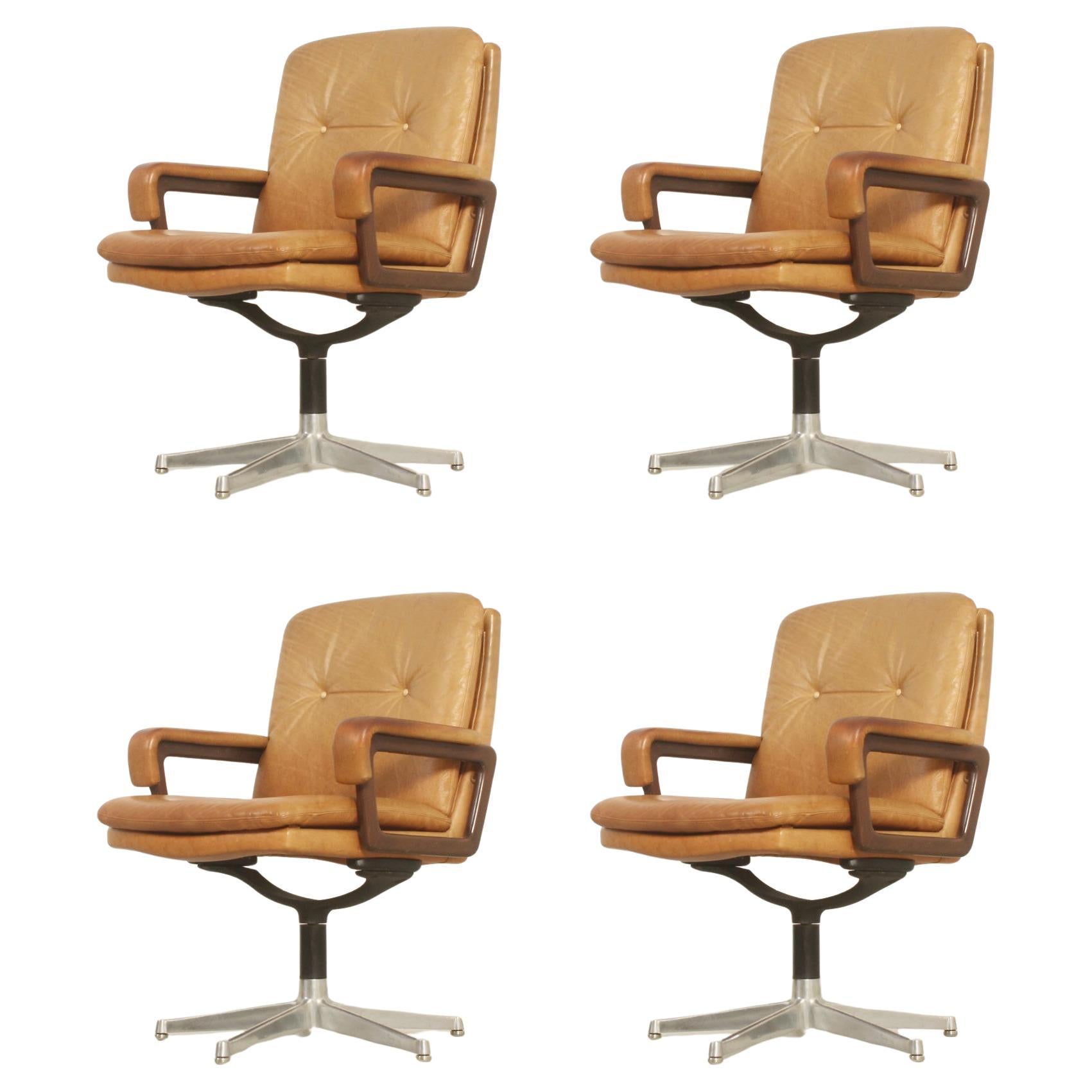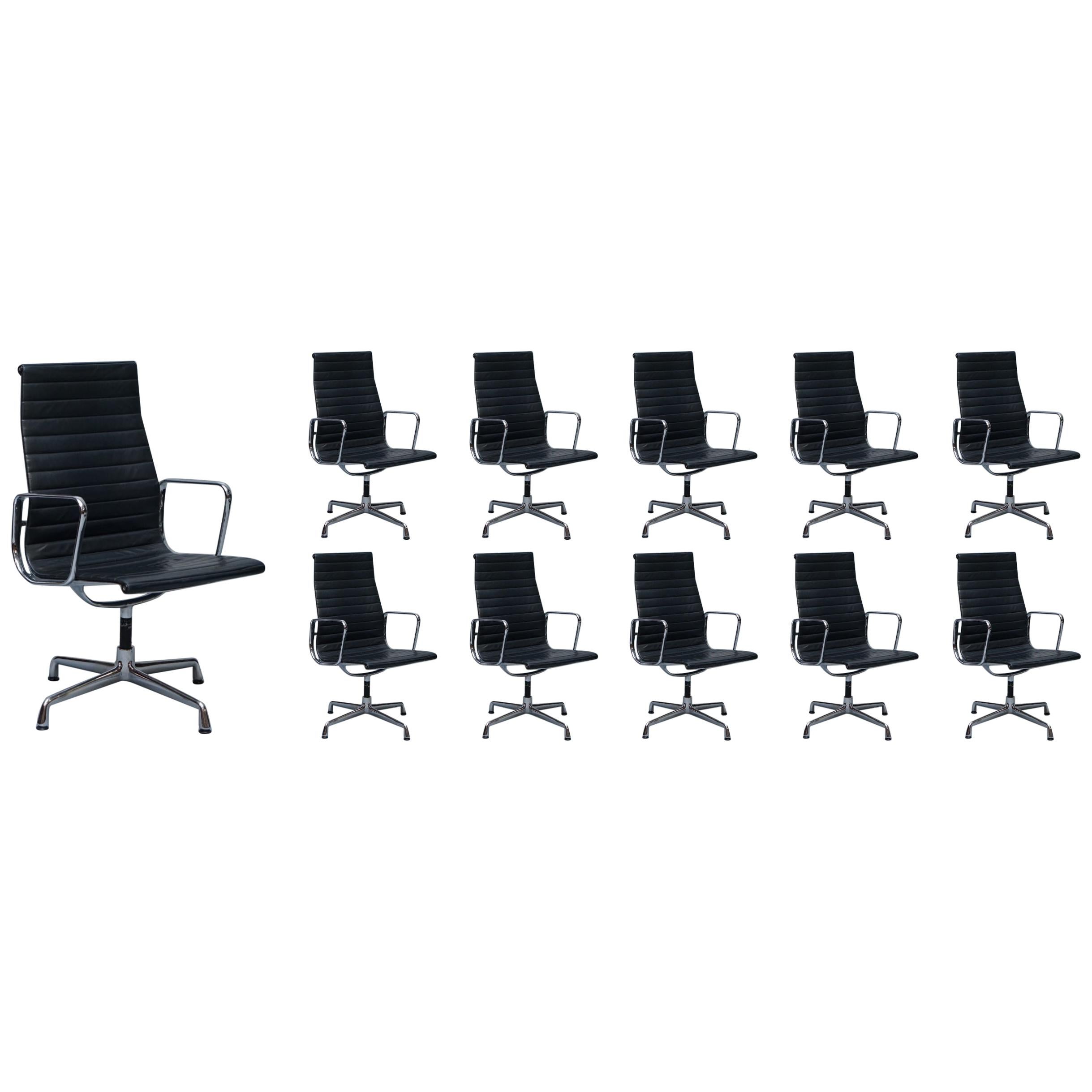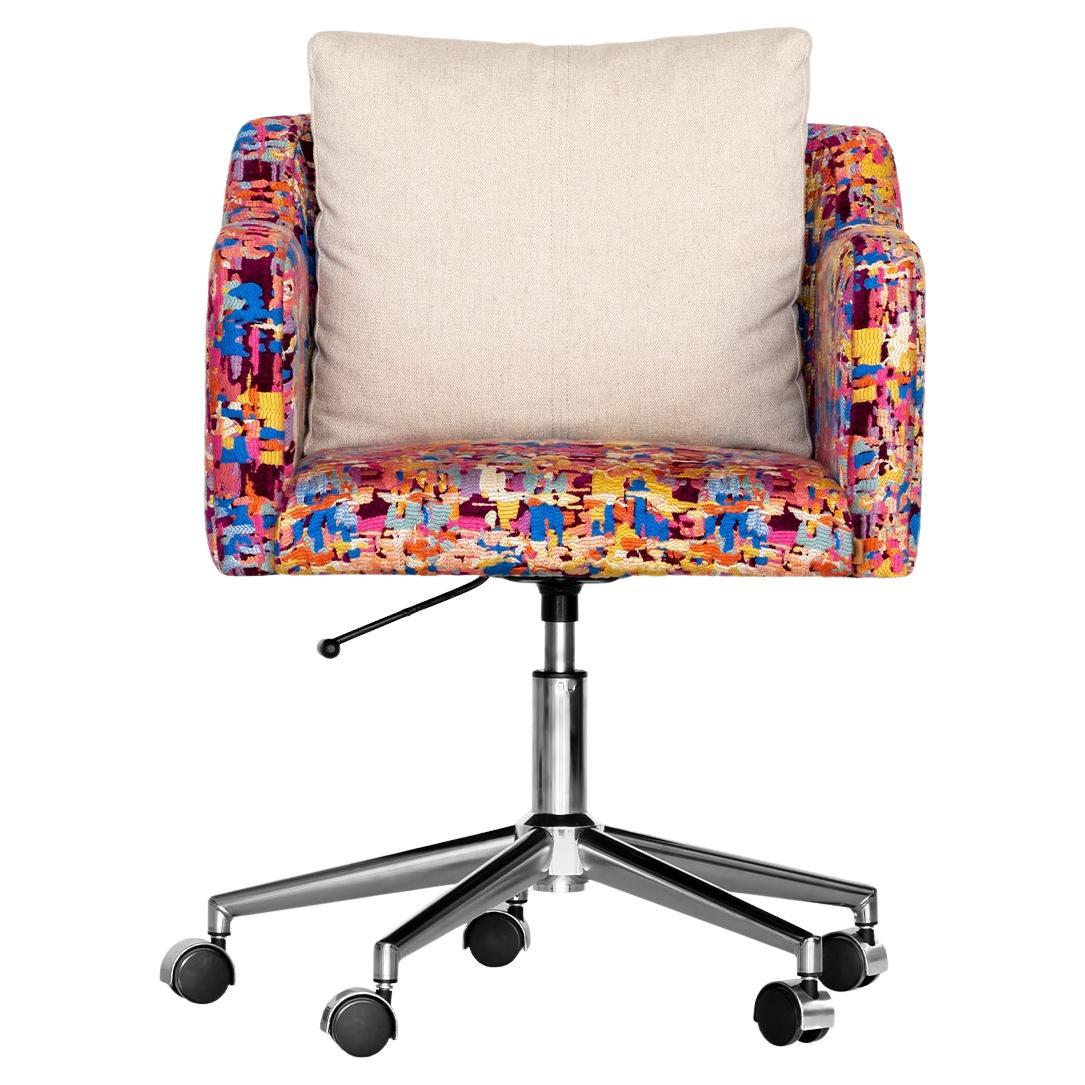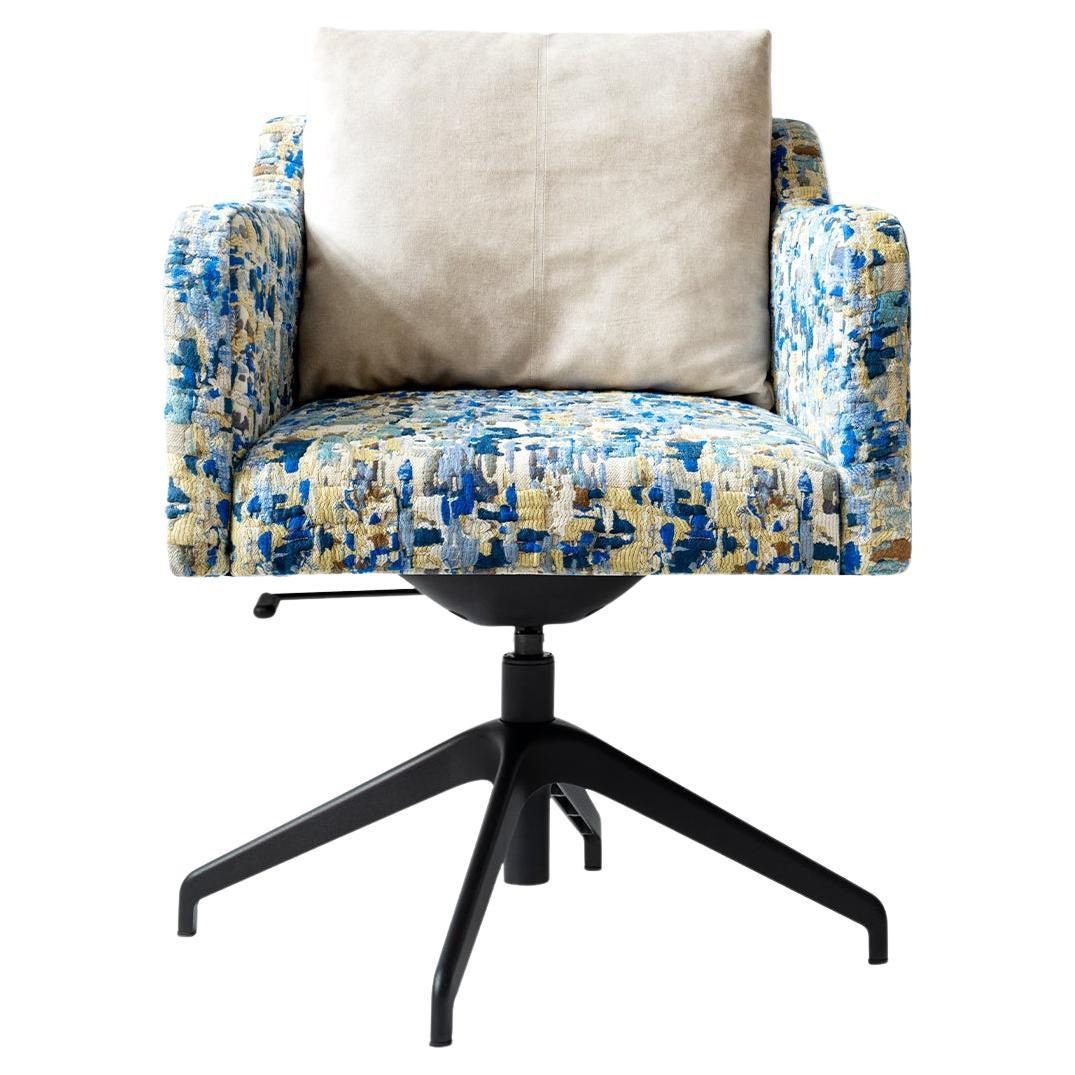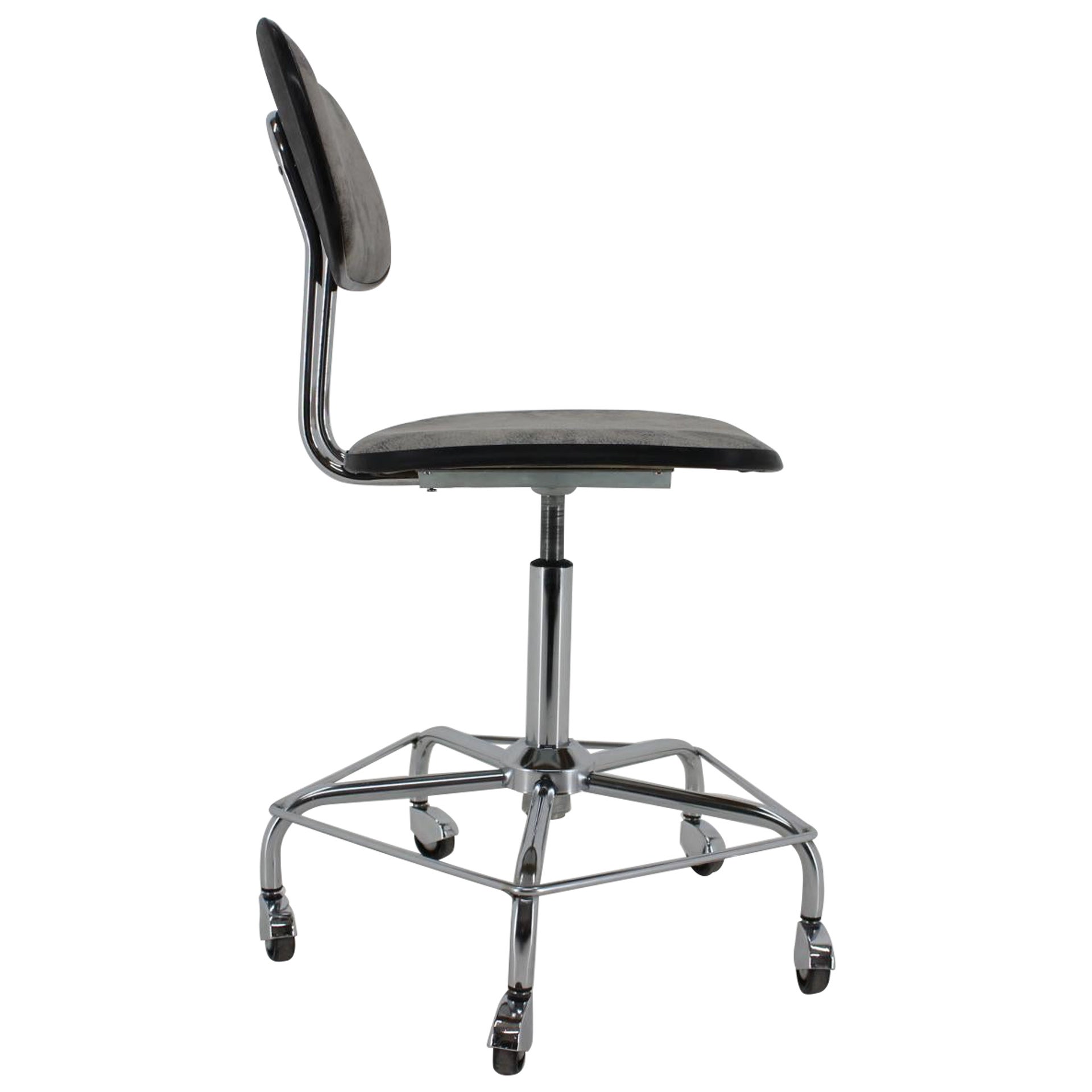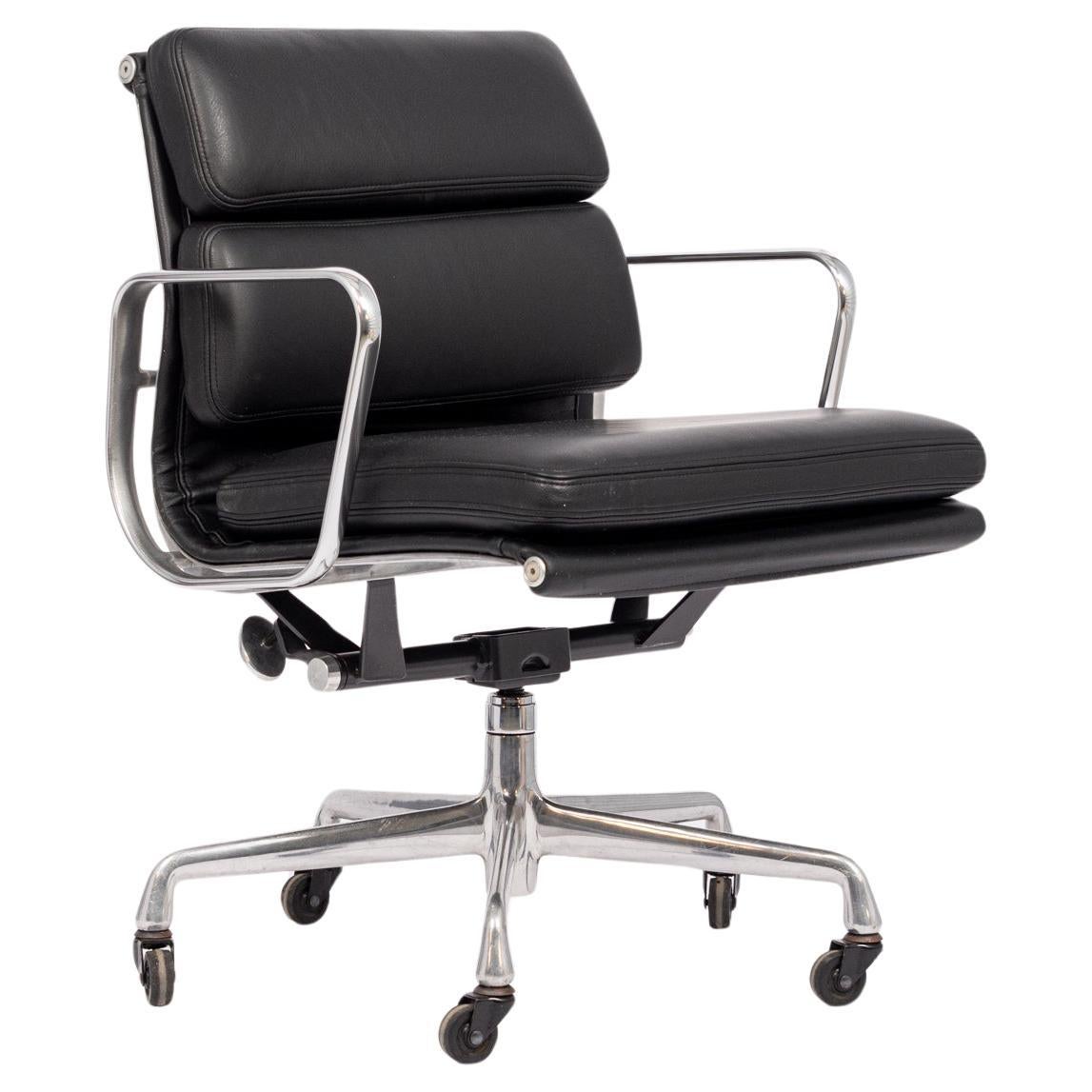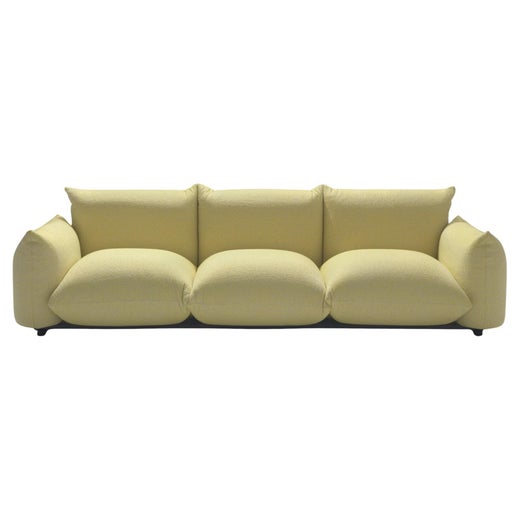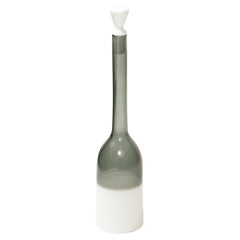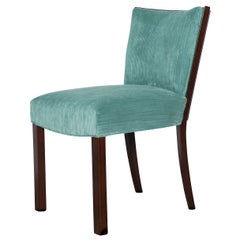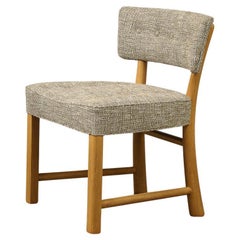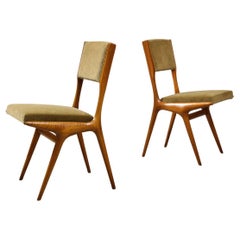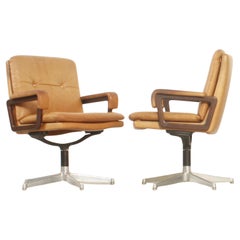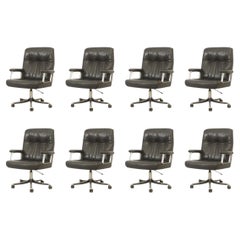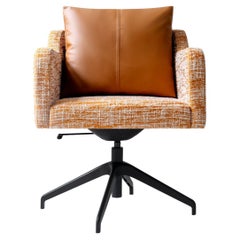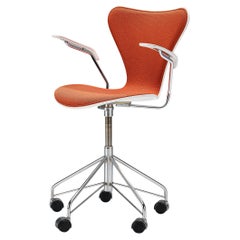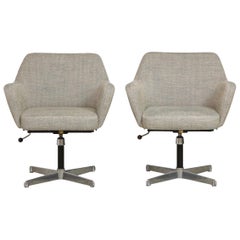
Gio Ponti & Alberto Roselli for Arflex, Pair of "Airone" Model Office Chairs
View Similar Items
Gio Ponti & Alberto Roselli for Arflex, Pair of "Airone" Model Office Chairs
About the Item
- Creator:
- Dimensions:Height: 30 in (76.2 cm)Width: 26.5 in (67.31 cm)Depth: 21 in (53.34 cm)Seat Height: 17.5 in (44.45 cm)
- Sold As:Set of 2
- Style:Modern (Of the Period)
- Materials and Techniques:
- Place of Origin:
- Period:
- Date of Manufacture:1955
- Condition:Reupholstered. Wear consistent with age and use. Very good condition. Minor wear to frame. Recently reupholstered.
- Seller Location:New York, NY
- Reference Number:Seller: LU7856146338821stDibs: LU785614633882
Gio Ponti
An architect, furniture and industrial designer and editor, Gio Ponti was arguably the most influential figure in 20th-century Italian modernism.
Ponti designed thousands of furnishings and products — from cabinets, mirrors and chairs to ceramics and coffeemakers — and his buildings, including the brawny Pirelli Tower (1956) in his native Milan, and the castle-like Denver Art Museum (1971), were erected in 14 countries. Through Domus, the magazine he founded in 1928, Ponti brought attention to virtually every significant movement and creator in the spheres of modern art and design.
The questing intelligence Ponti brought to Domus is reflected in his work: as protean as he was prolific, Ponti’s style can’t be pegged to a specific genre.
In the 1920s, as artistic director for the Tuscan porcelain maker Richard Ginori, he fused old and new; his ceramic forms were modern, but decorated with motifs from Roman antiquity. In pre-war Italy, modernist design was encouraged, and after the conflict, Ponti — along with designers such as Carlo Mollino, Franco Albini, Marco Zanuso — found a receptive audience for their novel, idiosyncratic work. Ponti’s typical furniture forms from the period, such as the wedge-shaped Distex chair, are simple, gently angular, and colorful; equally elegant and functional. In the 1960s and ’70s, Ponti’s style evolved again as he explored biomorphic shapes, and embraced the expressive, experimental designs of Ettore Sottsass Jr., Joe Colombo and others.
Ponti's signature furniture piece — the one by which he is represented in the collections of the Museum of Modern Art in New York, Germany’s Vitra Design Museum and elsewhere — is the sleek Superleggera chair, produced by Cassina starting in 1957. (The name translates as “superlightweight” — advertisements featured a model lifting it with one finger.)
Ponti had a playful side, best shown in a collaboration he began in the late 1940s with the graphic artist Piero Fornasetti. Ponti furnishings were decorated with bright finishes and Fornasetti's whimsical lithographic transfer prints of things such as butterflies, birds or flowers; the Montreal Museum of Fine Arts possesses a 1950 secretary from their Architetturra series, which feature case pieces covered in images of building interiors and facades. The grandest project Ponti and Fornasetti undertook, however, lies on the floor of the Atlantic Ocean: the interiors of the luxury liner Andrea Doria, which sank in 1956.
Widely praised retrospectives at the Queens Museum of Art in 2001 and at the Design Museum London in 2002 sparked a renewed interest in Ponti among modern design aficionados. (Marco Romanelli’s monograph, which was written for the London show, offers a fine overview of Ponti’s work.) Today, a wide array of Ponti’s designs are snapped up by savvy collectors who want to give their homes a touch of Italian panache and effortless chic.
Find a range of vintage Gio Ponti desks, dining chairs, coffee tables and other furniture on 1stDibs.
Arflex
From its unorthodox beginnings, Italian manufacturer Arflex grew into one of the leaders of 20th-century furniture design. Its furniture came to be known for its integration of new materials and bold appeal, and today a variety of vintage Arflex chairs, sofas and tables are emblems of mid-century modernism.
Arflex was established in Milan in 1947 by Pirelli employees Carlo Barassi, Pio Reggiani, Renato Teani and Aldo Bai. Barassi, a Milan Polytechnic graduate and visionary engineer at the Italian tire manufacturer, explored innovative technology and new uses for synthetic materials in domestic products (for Kartell, he codeveloped a ski rack for automobiles). The four founders partnered with a young architect named Marco Zanuso, who also desired to create furniture that featured an application of novel materials such as elastic tape and polyurethane foam.
One of Arflex’s inaugural pieces was Zanuso’s Lady armchair, a seat made of polyurethane foam that was manufactured in pieces and assembled at the very end of the production process. It won a gold medal at the 1951 Milan Triennale. A couple of years later, Arflex collaborated with Studio BBPR to create the office-chic Elettra and Neptunia chairs. The flourishing furniture company quickly established a reputation for compelling products and attracting and working with up-and-coming designers such as Roberto Menghi, who created Hall, a luxurious line of seating that would earn the Compasso d’Oro – Honorable Mention in 1959.
In the 1960s, Arflex continued to welcome the use of new and cutting-edge materials. Popular designs from this decade include Carlo Bartoli's fiberglass and polyester resin Gaia lounge chair and Cini Boer’s Bobo Relax lounger, one of history’s first seating pieces made of polyurethane foam (it has no internal frame). Boer, a pioneer of furniture design in Italy, also created the Strips sofa for the brand in 1972. Part of a plush modular seating system, the Strips sofa became an Arflex icon and was awarded the Compasso d'Oro in 1979.
Arflex continues to work with innovative designers to this day. Among their more recent collaborations is with Swedish design studio Claesson Koivisto Rune. The company's legendary creations are also on display at museums worldwide. The Lady chair, for example, is in the permanent collection of the Museum of Modern Art in New York City.
On 1stDibs, you can find a collection of vintage Arflex lounge chairs, armchairs, coffee tables and other furniture.
More From This Seller
View AllVintage 1950s Italian Mid-Century Modern Bottles
Blown Glass
Vintage 1950s American Mid-Century Modern Side Chairs
Vintage 1950s American Mid-Century Modern Dining Room Chairs
Fabric, Mahogany
Vintage 1950s Italian Mid-Century Modern Dining Room Chairs
Fabric, Walnut
21st Century and Contemporary American Modern Wall-mounted Sculptures
Porcelain
Early 20th Century American Mid-Century Modern Candle Holders
Pewter
You May Also Like
Vintage 1960s Italian Mid-Century Modern Office Chairs and Desk Chairs
Steel
Vintage 1970s Italian Mid-Century Modern Office Chairs and Desk Chairs
Metal, Aluminum
21st Century and Contemporary Turkish Modern Office Chairs and Desk Chairs
Metal
Vintage 1950s Danish Scandinavian Modern Swivel Chairs
Chrome, Metal
Vintage 1950s American Mid-Century Modern Office Chairs and Desk Chairs
Steel
Vintage 1950s American Mid-Century Modern Office Chairs and Desk Chairs
Metal, Aluminum, Steel
Recently Viewed
View AllRead More
Barnaba Fornasetti’s Hallucinatory House Has His Father’s Spirit
Behind a nondescript facade in northeastern Milan is the magical residence of Barnaba Fornasetti. It's a shrine to the style developed by his design-legend father, which still defies categorization.
Billy Cotton Layers His Interiors with Lived-In Comfort
The Brooklyn-based designer is adept at styles ranging from austere to over-the-top, espousing an architectural, detail-oriented approach also evident in his line of furniture and lighting.
